
Meaning of the Gwanghwamun Square & Statue
Gwanghwamun is the main entrance to Gyeongbokgung Palace, and right in front of it is Gwanghwamun Square, at the center of Jongno in Seoul. You can explore Seoul by taking a walk from Gwanghwamun Square to Gyeongbokgung Palace. Here's what Gwanghwamun means, why Gwanghwamun Square is important, and what statues you can see there.
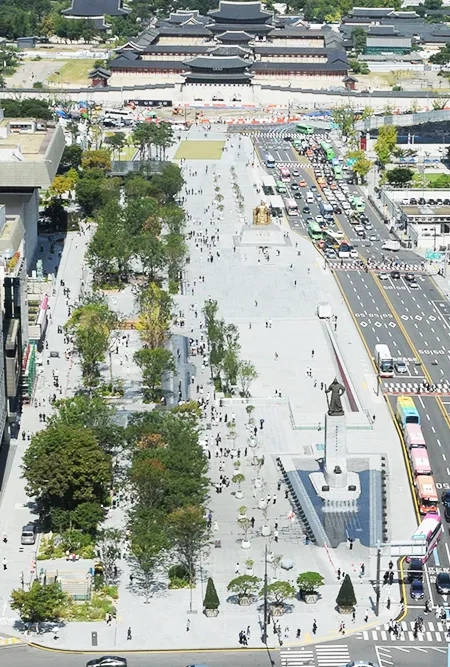
Gwanghwamun Meaning and Ceremony of Guarding
Gwanghwamun Meaning: The name Gwanghwamun breaks down into 'Mun,' which means gate, and 'gwanghwa,' which means bright light shining far and wide. They represent a hope that the king's kindness will reach far and wide, making people's lives better. In 1395, the original Gwanghwamun Gate was built. The current one is a reconstruction.
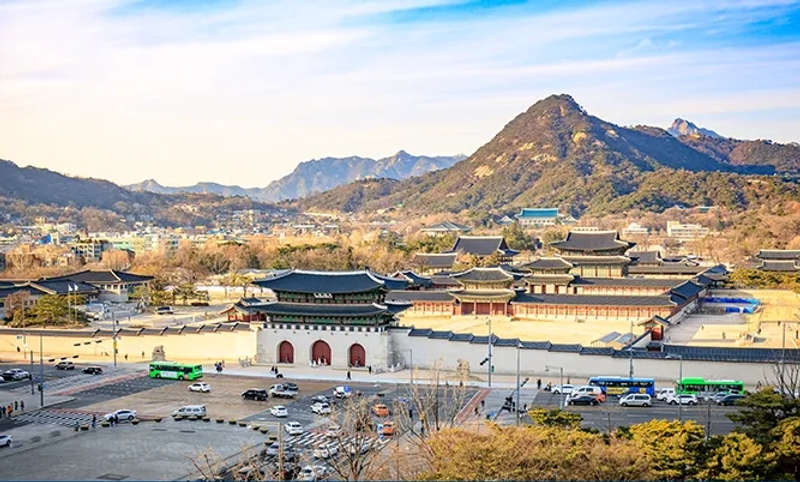
Gyeongbokgung Palace royal guard changing ceremony: There's a changing of the guard ceremony inside the gate every day at 11 AM and 1 PM, lasting 10 minutes each time, and at 10 AM and 2 PM, which lasts 20 minutes each time, except Tuesdays when Gyeongbokgung Palace is closed. Everyone can watch it for free.

The Statue of King Sejong the Great
In the Joseon Dynasty, King Sejong the Great invented Hangul (한글), the Korean alphabet. Back then, Korea didn't have a standard way of writing in Korean. People were using Chinese characters to write Korean, but it wasn't quite fitting for the language. King Sejong, who felt sorry for the people, came up with Hangul, our own alphabet.

Although rich and powerful people liked Chinese characters, King Sejong wanted Hangul to become popular. Hangul was easy to learn and convenient, so it gradually became widely used, starting with just ordinary people. He wanted everyone to be able to read and write.

King Sejong helped the Joseon Dynasty make significant advancements in science, agriculture, literature, and art. We even have his picture on the 10,000 won banknote. Check out this post to learn about the currency featuring his portrait and other South Korean currency📌:
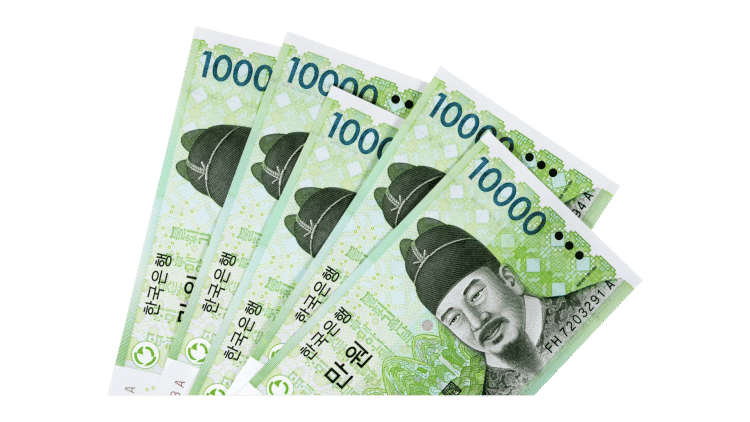
The Statue of Admiral Yi Sun-sin
As Japan attacked Korea in 1592, Admiral Yi Sun-sin, a legendary Korean naval commander, achieved remarkable success during the seven-year Imjin War.
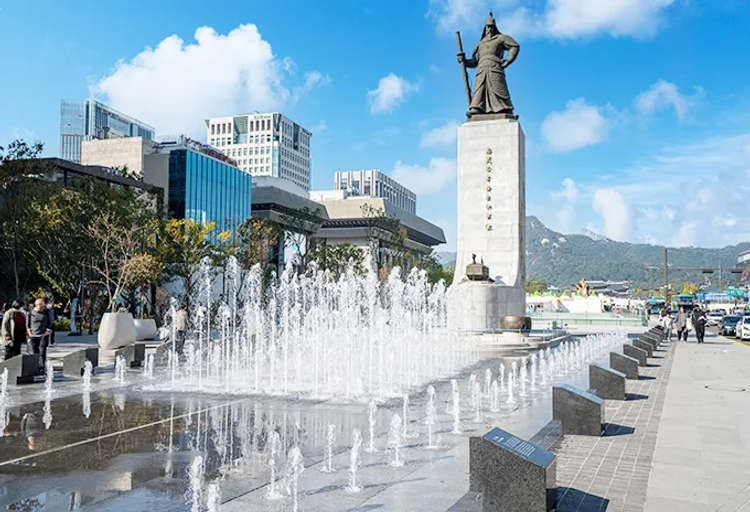
In the famous Battle of Myeongnyang, his 13 ship fleet beat Japan's 133 ships, saving Korea from invasion. His face is prominently featured on the 100-won coin to this day.

He also designed the Turtle Ship, which looks like a turtle and has a roof that's spiked and bladed. This vessel's roof protected against enemy attacks, and its spikes deterred boarding attempts. You can see a model at the War Memorial of Korea📌.

Symbol of Democracy, Gwanghwamun Street
Gwanghwamun Square has been an important location for many significant political and cultural events in South Korea's history. It's a popular spot for protests, celebrations, and cultural festivals. It is the path leading to Gyeongbokgung Palace and, beyond that, the Blue House (Cheongwadae). It is the way to the leader's house.
So, when important national issues come up, Koreans often come here, holding candles. In October 2016, the Candlelight Protest began during Park Geun-hye's presidency, in the middle of the Choi Soon-sil Gate scandal. There were 20 rounds of protests until March 2017. It led to the impeachment of Park Geun-hye, and arrest of those involved in the scandal. Like this, Gwanghwamun Square is a symbol of democracy in South Korea.
📰 Related News - The Washington Post, May 10, 2017, "South Korea just showed the world how to do democracy"
🟡 President Yoon Seok-yeol, the 20th President of South Korea, moved both the office and residence, so the Blue House Korea (Cheongwadae) is now open to the public. If you want to take a free tour of the Blue House, check out this post📌:
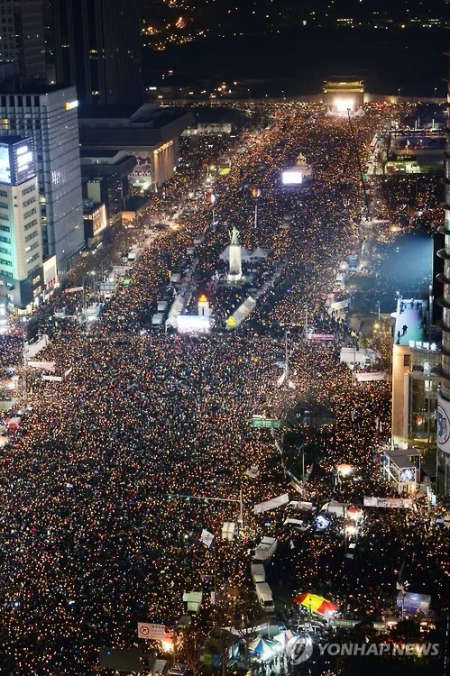
Seoul City Tour Bus Ticket Office
The Seoul City Tour Bus starts right near Gwanghwamun Square. There's a ticket office just 100m from Exit 6 at Gwanghwamun Station on Line 5, and you can hop on and hop off all day, visiting Seoul's famous attractions. See how convenient it is to travel around Seoul with this Tour Bus, stopping at Myeongdong, N Seoul Tower, Insadong, and returning to Gwanghwamun Station. Check out this post to find out more📌:
Embassies in Gwanghwamun Square
The US and Australian embassies are located in Gwanghwamun Square. For travelers, it's a good idea to save the embassy contact info in case of an emergency. For travelers from these countries, it's a good idea to save the embassy contact info in case of an emergency.
📌 My post about the Australian Embassy in South Korea:
📌 My post about the U.S. Embassy in South Korea:
Gwanghwamun Square Address, Subway Station
How to go Gwanghwamun Square?
Gwanghwamun Square is open 24 hours a day.
- Address: 172 Sejong-daero, Jongno-gu, Seoul
- Subway station: Subway Line 5, Gwanghwamun Station, Exit 2 OR Subway Line 3, Gyeongbokgung Station, Exit 6
- Entrance fee: Free
- Website: 🔗 Gwanghwamun Square
Wrap-up
It's a great route from Gwanghwamun Square to Gyeongbokgung Palace. If you're on the subway, just hop on Line 5 and get off at Gwanghwamun Station in the Jongno area. On your way, you'll see statues of important figures from Korean history and have the chance to watch the Changing of the Guard Ceremony at the palace. They also host events for both adults and kids from time to time.
Credits
The images featured in this post are courtesy of the Gwanghwamun Square website.